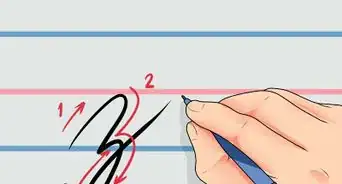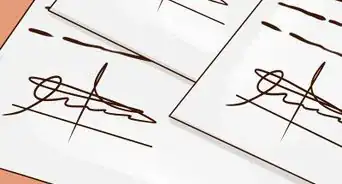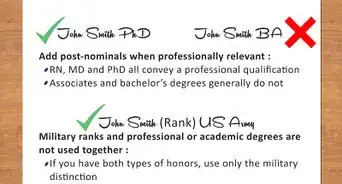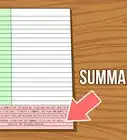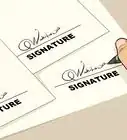This article was co-authored by wikiHow staff writer, Jennifer Mueller, JD. Jennifer Mueller is a wikiHow Content Creator. She specializes in reviewing, fact-checking, and evaluating wikiHow's content to ensure thoroughness and accuracy. Jennifer holds a JD from Indiana University Maurer School of Law in 2006.
There are 10 references cited in this article, which can be found at the bottom of the page.
wikiHow marks an article as reader-approved once it receives enough positive feedback. In this case, several readers have written to tell us that this article was helpful to them, earning it our reader-approved status.
This article has been viewed 735,823 times.
Learn more...
In this day and age, when smartphones are ubiquitous, you might wonder how often you'd use shorthand if you learned it. Plenty of times, it turns out! Whether you're a student or need to take quick notes at a meeting or while you're on a call, the ability to write notes by hand more quickly is always a valuable skill. Read on to learn about the 3 major styles of shorthand so you can pick the one that works best for you. Then, we'll let you in on some tips to improve your shorthand skills after you've learned the basics.
Things You Should Know
- Choose Teeline shorthand for an easy-to-learn style based on the alphabet. Teeline is also the shorthand form most journalists are required to learn.
- Learn Gregg shorthand if you're interested in a phonetic style that can be written using any pen or pencil. Gregg is typically used by court reporters.
- Try Pitman shorthand if you want a more stylistic shorthand method. Pitman can be more complex and requires a pen with a nib. It's an older method, more popular in Europe.
- Improve your shorthand by practicing a lot and writing with an ink pen that glides smoothly across the page.
Steps
Teeline Shorthand
-
1Memorize the Teeline shorthand alphabet. The Teeline alphabet is based on the letters of the English alphabet that you're already familiar with. This makes it a little quicker and easier to pick up than the other shorthand systems. Most of the letters are a small fraction of the corresponding English letters.[1]
- For example, the top point of the letter "A" is the symbol for that letter in Teeline.
-
2Keep only the essential vowels and consonants in words. Leave out silent vowels and consonants, double vowels and consonants, and any other letters that are unnecessary for you to understand the word you've written. There are some conventional representations of words, but for the most part, this is up to you! As long as you can read it, that's all that matters. Get in the habit of recognizing words this way when writing in English and it will make your shorthand practice a lot easier.[2]
- For example, if you were writing the word "lamb," you would only write "lm" in Teeline. The word "comma" would be "cma," "about" would be "abt," and "light" would simply be "lt."
- For a full sentence in Teeline, such as, "You should always remember to take notes in class," you would only include the letters, "U shld alwys rmbr t tk nts in cls.”
- For the most part, Teeline is based on the alphabetical spelling of a word, not how it sounds, but there are some exceptions. For example, consonant blends such as "gh" or "ph" can be reduced to the symbol for "f."
Advertisement -
3Write vowels smaller than consonants. In Teeline shorthand, vowels are a bit smaller than consonants so it's easy to distinguish them from similarly shaped consonants. Each vowel has a full vowel symbol, which usually stands in for a specific word. There's also a "vowel indicator," an even smaller symbol that you'll typically use to indicate the vowel in words.[3]
- For example, the letter "A" standing alone stands for "able to" or "ability." You should be able to figure out from the context which word you meant.
- Vowel indicators are particularly handy for words that start or end with a vowel because all you need is a small mark, not the full symbol for the letter itself.
-
4Join consonants together. Write consonants in 1 or 2 strokes without lifting your pen. Keep the first letter clear, then add the next letter to form a single symbol. Sometimes, whole words can be written with a single symbol by joining consonants. This makes your shorthand much faster.[4]
- For example, you could join "b" and "d" by starting with the symbol for "b," then adding a horizontal line on the "b" for the "d."
- Try a searchable Teeline dictionary to figure out how to write specific words with consonants joined together.
Pitman Shorthand
-
1Memorize the Pitman phonetic symbols. Pitman phonetic symbols are based on the sounds that form words, rather than the specific letters of the alphabet you use to write them. Variations in the thickness of the strokes differentiate sounds, most of which are written with a single line or slash. There are separate sets of symbols for consonant sounds and vowel sounds.[5]
- Because this method uses phonetics, a sound that might be written with different letters would use the same symbol in the Pitman shorthand notation. For example, the "f" sound in the words "form," "elephant," and "rough" would all use the same symbol.
-
2Adjust the thickness of your stroke depending on the consonant. Generally, voiced consonants (those where you can feel the vibration of your vocal cords when you say them) have thicker strokes, while unvoiced consonants have thinner strokes. This is in keeping with the phonetic focus of Pitman shorthand.[6]
- For example, the vertical line for the unvoiced consonant "t" is thinner than the vertical line for the voiced consonant "d."
- The left slanted line for the unvoiced consonant "p" is thinner than the left slanted line for the voiced consonant "b."
-
3Use diacritical marks to represent vowels where necessary. Diacritical marks are dots and dashes applied around the consonant sound symbols. These marks indicate the vowel sound used for that syllable. Your shorthand reflects the way the word sounds, not its actual spelling.[7]
- For example, you'd write "bat" by placing the "t" symbol under the "b" symbol, then add a dot for the "a" at the top of the left-hand slant of the "b."
-
4Speed up your writing with abbreviations for common words. Frequently used words, such as "a," "the," "of," and "to," have their own single symbol abbreviations that make your writing even faster. Many of these abbreviations are common words used in any field, but there are also industry-specific abbreviations depending on where you're using Pitman shorthand.[8]
- For example, if you use Pitman shorthand in the legal field, you'd want to learn abbreviations for common legal terms, such as "plaintiff," "defendant," "judge," "witness," and "court."
- The Long Live Pitman's Shorthand website has an excellent resource with printable drill workbooks as well as lists of vocabulary, contractions, and short forms.
Gregg Shorthand
-
1Memorize the Gregg phonetic symbols. Gregg symbols are phonetic, with separate symbols for vowel sounds and consonant sounds. Most of the Gregg symbols are hooks, lines, or circles. Like other shorthand systems, these symbols are connected together to form words so you can write even faster.[9]
-
2Write hooks and lines for each consonant sound. Gregg Shorthand uses a hook of a different shape or length to represent most consonant sounds. Some consonant sounds, such as "n" and "m," are straight horizontal lines. Other consonant sounds, such as "f" and "v," are more vertical and curved. Practice the symbol for each consonant sound multiple times so you can commit it to memory.[10]
- The Gregg system also has individual symbols that represent common consonant clusters, such as the "nd" in the word "and."
-
3Use circles of different sizes to represent vowel sounds. The circle you use depends on the vowel sound, not necessarily the specific vowel in the written word, so be careful! As a phonetic system, Gregg relates the sound, not the specific spelling. So the same vowel symbol would be used for both the "ee" in "feet" and the "i" in "elite."[11]
- As with consonants, there are circle combinations that represent vowel clusters or diphthongs. For example, the vowel sound "oo" is represented by an open circle at the bottom of the word, while the vowel sound "ea" is represented by a circle with a dot in the center.
-
4Include appropriate punctuation marks. Unlike other shorthand systems, Gregg shorthand includes symbols for periods, question marks, and hyphens. The symbol for the punctuation mark goes just above the bottom line.[12]
- For example, a small dash represents a period while a small "x" represents a question mark.
Improving Your Shorthand
-
1Use a pen with a nib for Pitman shorthand. A pen with a flexible nib allows you to vary the thickness of your strokes more quickly and easily. Since Pitman shorthand relies on strokes of different thicknesses to differentiate letters, this type of pen will help you write Pitman shorthand more quickly.[13]
- Gregg and Teeline, on the other hand, don't require any variation in the thickness of strokes, so any sort of pen is fine—just make sure it glides smoothly across the page so you can write as quickly as possible.
-
2Take an online course in writing shorthand. An online course is the easiest way to learn shorthand. Some of these courses are even free! Since online learning is usually self-pacing, you can learn at your own speed and take time with parts that you don't get as easily.[14]
- Try Shorthandly if you want to get started in Gregg or Pitman. They offer free courses through YouTube videos as well as some practice resources on the site.
- Teeline Online offers lots of free Teeline resources, including downloadable worksheets and outlines you can use.
- If you do better one-on-one, search locally for a veteran shorthand writer who's willing to tutor you. Local court reporter companies are good places to find shorthand writers.
-
3Practice your shorthand regularly to get faster at it. When you first get started, you'll be able to write pretty fast—but you'll quickly plateau, typically at around 80 words per minute. To get even faster, practice as often as you can, and don't be afraid to make mistakes![15]
- Use flashcards to quickly memorize specific symbols and outlines of words you use frequently. That'll definitely improve your speed.
- Keep a small notebook with you so you can practice your shorthand. For example, you might write your grocery list using shorthand or take notes during a meeting or a phone call.
Community Q&A
-
QuestionHow long does it take for one to master shorthand?
 Community AnswerIt took me one semester to learn Gregg shorthand. Of course, the amount of time will vary according to the amount of time you practice and how quickly you pick things up.
Community AnswerIt took me one semester to learn Gregg shorthand. Of course, the amount of time will vary according to the amount of time you practice and how quickly you pick things up. -
QuestionWhich shorthand technique is the best to learn?
 Community AnswerIt depends on who you are. Mine was Gregg shorthand, but my friend's was Pittman shorthand. It differs between people.
Community AnswerIt depends on who you are. Mine was Gregg shorthand, but my friend's was Pittman shorthand. It differs between people. -
QuestionIn Pitman and Gregg shorthand, which one is better for competitive exams?
 Community AnswerThere was a competition to determine this, and it's been shown Gregg has a slight advantage.
Community AnswerThere was a competition to determine this, and it's been shown Gregg has a slight advantage.
References
- ↑ https://teeline.online/learn/the-alphabet
- ↑ https://teeline.online/learn/disemvowelment
- ↑ http://realerthinks.com/teeline-for-the-curious-a-story-of-learning-things-because-i-can/
- ↑ https://teeline.online/learn/connecting-letters
- ↑ https://omniglot.com/writing/shorthand.htm
- ↑ https://tug.org/TUGboat/tb30-3/tb96sarman.pdf
- ↑ https://omniglot.com/writing/shorthand.htm
- ↑ https://www.long-live-pitmans-shorthand.org.uk/short-forms-intro.htm
- ↑ https://tug.org/tugboat/tb29-3/tb93sarman.pdf
About This Article
To write shorthand, start by choosing a method of shorthand that you want to learn, like the Teeline method, the Pitman method, or the Gregg method. Whichever method you choose, try to practice writing with it at least once a day since regular practice will help you pick up on it quickly. You can make some flashcards to help you practice, and you can find a copy of the shorthand alphabet on hand so you have something to reference. If you're serious about learning shorthand, consider taking an online shorthand class or hiring a tutor. To learn how to write using the Teeline, Pitman, and Gregg methods, keep reading!

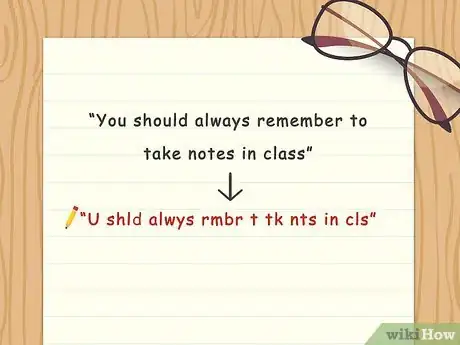


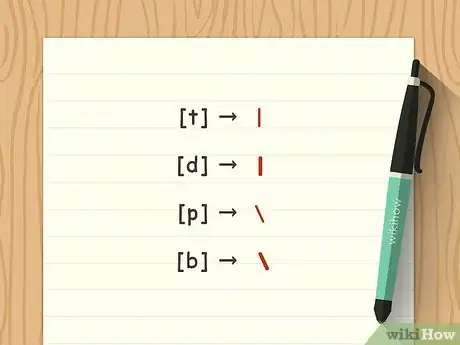
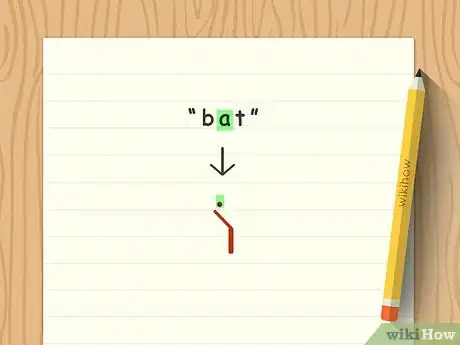


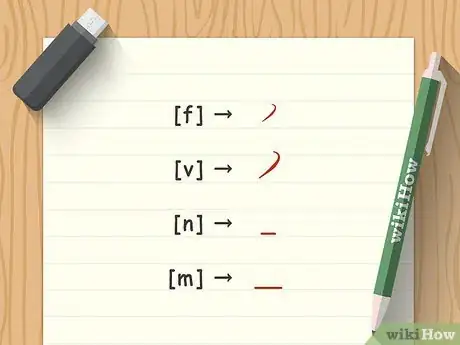

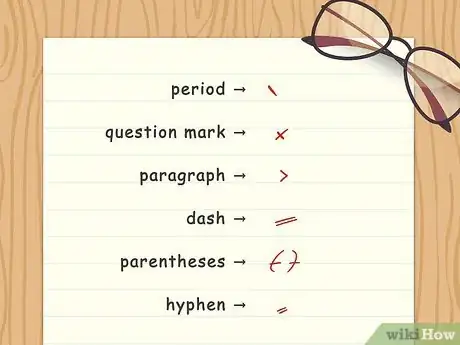





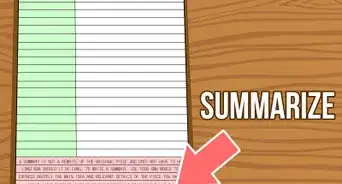
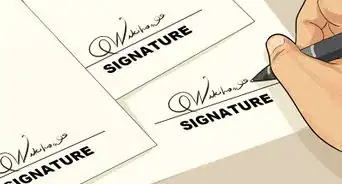
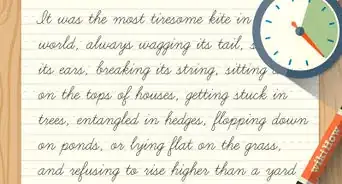
-Step-11-Version-3.webp)


